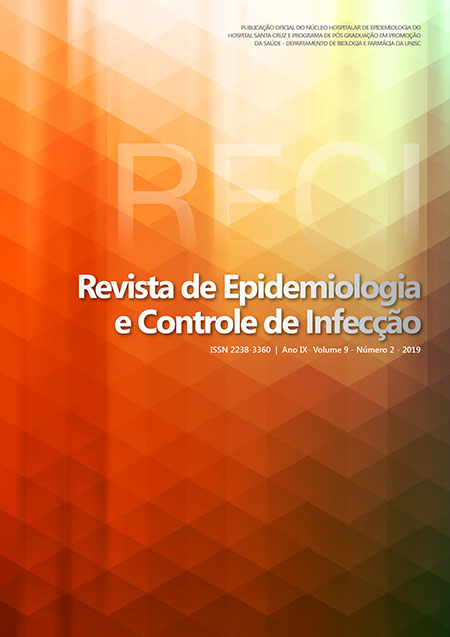Frequency of Escherichia coli and Klebsiella spp producing ESBL at University Hospital, in Manaus
DOI:
https://doi.org/10.17058/reci.v9i2.12152Abstract
Background and objectives: Extended-spectrum beta-lactamase (ESBL) producing bacteria are increasingly present, above all, by the routine use of antibiotics. They mainly cause urinary and operative wound infections and are characterized by resistance to third-generation cephalosporins, aztreonam and the association of cephalosporins with clavulanic acid. In order to know the frequency (phenotype) of resistant Escherichia coli and Klebsiella spp, this study was proposed. Methods: In vitro sensitivity test by disk approximation (according to CLSI) to determine the frequencies of resistant Escherichia coli and Klebsiella spp, isolated from biological materials of patients seen in HUGV between 2017 and 2018, and analysis in Microsoft Office Excel software, v. 2016. Results: 34.66% were Escherichia coli ESBL and 46.80% were Klebsiella spp ESBL totaling 39.34% ESBL samples. Of the biological media ESBL were predominant in: urine (56.25%) and surgical wounds (22.91%). Clinics with greater occurrence of ESBL: medical and surgical. Conclusion: high complexity care was determinant in the occurrence of ESBL, with a predominance of Escherichia coli ESBL. Keywords: Phenotype, Escherichia coli, Klebsiella, ESBL, Hospital Infection.Downloads
Downloads
Published
How to Cite
Issue
Section
License
The author must state that the paper is original (has not been published previously), not infringing any copyright or other ownership right involving third parties. Once the paper is submitted, the Journal reserves the right to make normative changes, such as spelling and grammar, in order to maintain the language standard, but respecting the author’s style. The published papers become ownership of RECI, considering that all the opinions expressed by the authors are their responsibility. Because we are an open access journal, we allow free use of articles in educational and scientific applications provided the source is cited under the Creative Commons CC-BY license.


